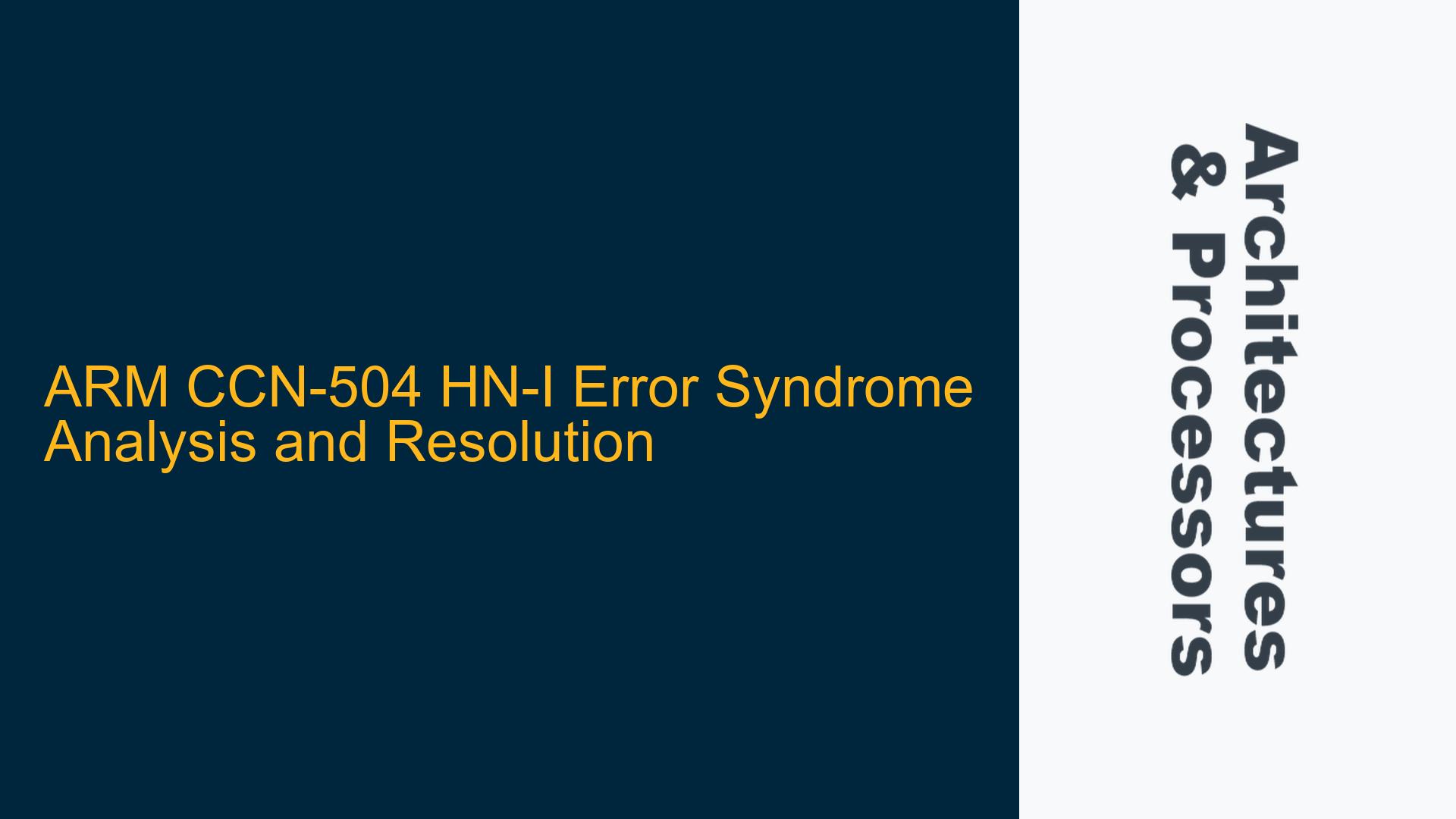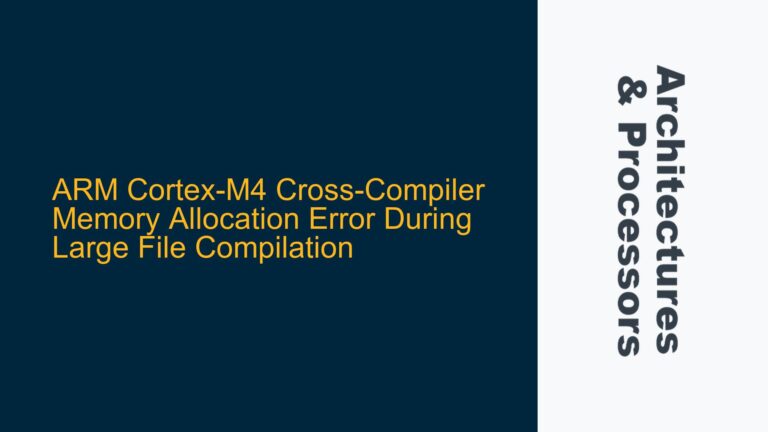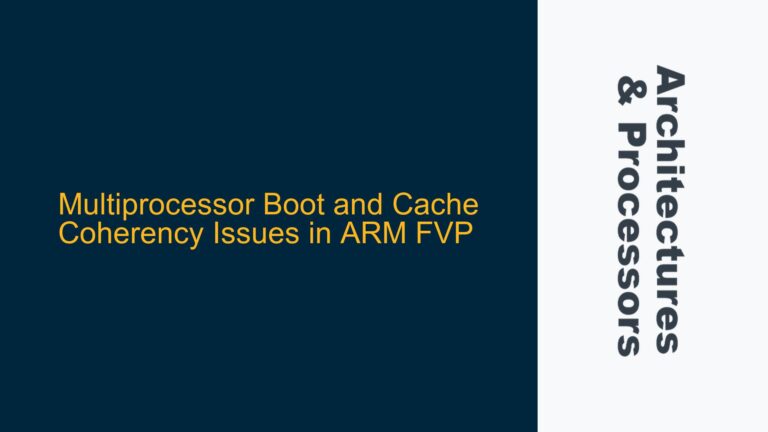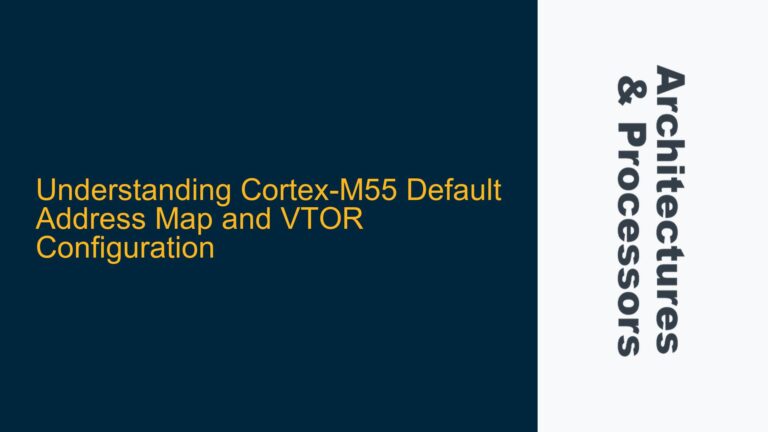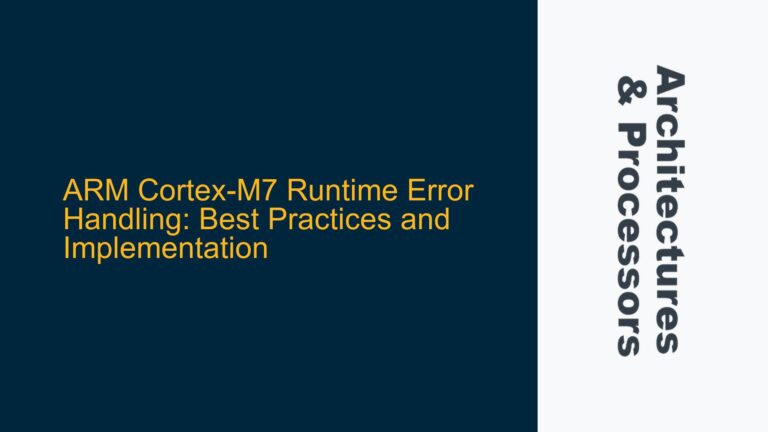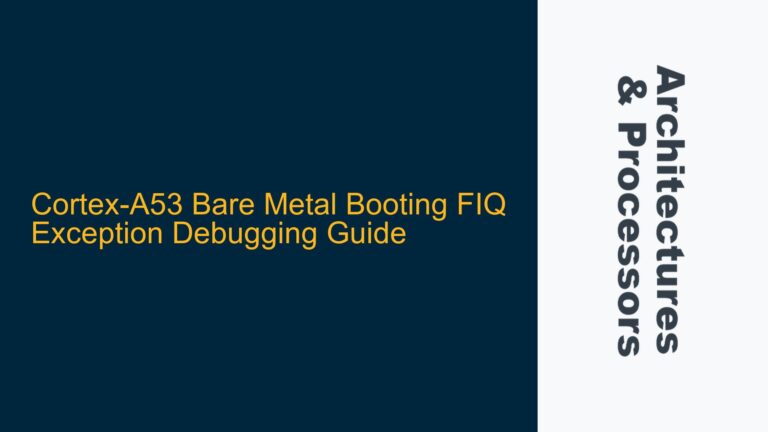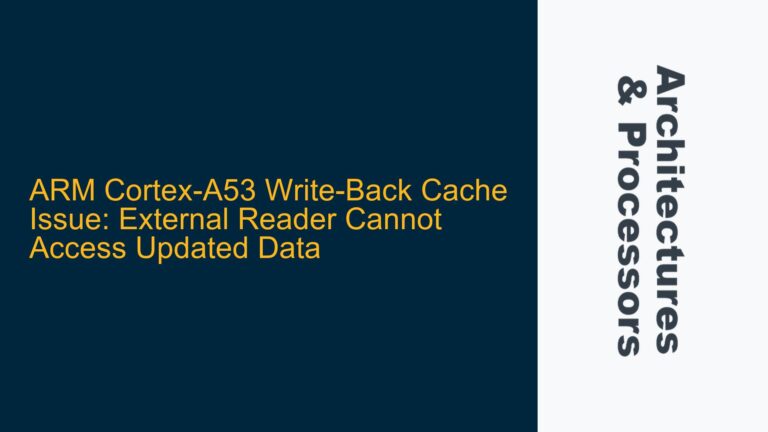ARM CCN-504 HN-I Error Syndrome During Memory Read/Write Operations
The ARM CCN-504 interconnect is a critical component in high-performance ARM-based systems, facilitating communication between CPUs, memory, and peripherals. The HN-I (Home Node Interface) module within the CCN-504 is responsible for managing coherent memory transactions. When an error is detected in the HN-I module, it is logged in the hn-i.r_syndrome_reg0 register, which provides diagnostic information about the fault. In this case, the error syndrome value 0xF80000C 698280242 indicates a specific fault condition during memory read/write operations.
The error syndrome is a critical diagnostic tool, as it captures the state of the transaction at the time of the fault. The value 0xF80000C 698280242 suggests a complex fault scenario, potentially involving multiple factors such as address decoding, data corruption, or protocol violations. The fact that writing 0xFFFFFFFFFFFFFFFF to the hn-i.err_syndrome_clr register temporarily clears the error but does not resolve the underlying issue indicates that the fault is recurring and likely tied to a systemic problem rather than a transient condition.
The persistence of the error raises concerns about system stability. Ignoring the error could lead to unpredictable behavior, including data corruption, system crashes, or silent failures. Therefore, it is essential to investigate the root cause of the error and implement appropriate fixes to ensure reliable operation.
Memory Transaction Protocol Violations and Cache Coherency Issues
The HN-I error syndrome 0xF80000C 698280242 suggests that the fault is related to memory transaction protocol violations or cache coherency issues. The CCN-504 relies on a coherent interconnect protocol to ensure that all components in the system have a consistent view of memory. When a transaction violates this protocol, the HN-I module flags the error to prevent further corruption.
One possible cause of the error is a mismatch between the expected and actual transaction attributes. For example, a transaction might be marked as cacheable when it should be non-cacheable, or it might use an incorrect memory type. This mismatch can lead to protocol violations, triggering the HN-I error syndrome.
Another potential cause is a cache coherency issue. The CCN-504 uses a distributed cache coherency protocol to maintain consistency across multiple caches. If a cache line is invalidated or flushed at the wrong time, it can result in stale data being used in a transaction, leading to coherency violations. This is particularly problematic in systems with multiple CPUs or accelerators accessing shared memory.
A third possible cause is a hardware fault in the memory subsystem. Faulty memory modules, incorrect memory timings, or signal integrity issues can all lead to corrupted data being read or written, triggering the HN-I error syndrome. In such cases, the error is not due to a software or protocol issue but rather a hardware problem that requires physical intervention.
Diagnosing and Resolving HN-I Error Syndrome in CCN-504
To diagnose and resolve the HN-I error syndrome, a systematic approach is required. The first step is to analyze the error syndrome value 0xF80000C 698280242 in detail. This value encodes information about the type of fault, the transaction attributes, and the component that detected the error. By decoding this value, it is possible to narrow down the potential causes and focus the investigation on the most likely scenarios.
The next step is to review the system configuration and ensure that all memory transactions are correctly configured. This includes verifying the memory attributes, such as cacheability and shareability, for all regions of memory. Any discrepancies between the expected and actual attributes should be corrected. Additionally, the cache coherency protocol should be reviewed to ensure that all components are following the correct procedures for maintaining coherency.
If the error persists after correcting the configuration, the next step is to investigate potential hardware issues. This involves testing the memory modules, verifying the memory timings, and checking for signal integrity issues. Tools such as logic analyzers and oscilloscopes can be used to capture and analyze the signals on the memory bus, identifying any anomalies that could be causing the error.
Once the root cause of the error has been identified, appropriate fixes can be implemented. If the error is due to a software or configuration issue, the necessary changes should be made to the system firmware or software. If the error is due to a hardware issue, the faulty components should be replaced or repaired. In some cases, it may be necessary to implement workarounds, such as disabling certain features or reducing the system clock speed, to mitigate the issue until a permanent fix can be applied.
Finally, it is important to monitor the system after implementing the fixes to ensure that the error does not recur. This can be done by enabling error logging and periodically checking the hn-i.r_syndrome_reg0 register for any new errors. If the error does recur, further investigation will be required to identify any remaining issues.
In conclusion, the HN-I error syndrome in the ARM CCN-504 is a critical issue that requires careful investigation and resolution. By systematically analyzing the error syndrome, reviewing the system configuration, and investigating potential hardware issues, it is possible to identify and fix the root cause of the error, ensuring reliable operation of the system. Ignoring the error is not recommended, as it could lead to unpredictable behavior and system instability.
